Alexander Alekseevich Khanzhonkov - one of the pioneers of the domestic film industry
Alexander Khanzhonkov - the man who first brought the Russian cinema from the booth attraction into the realm of real art. It was Khanzhonkov who opened the first electro-cinema in Russia, which became one of the first in the world. Here feature films were shown, cartoons were drawn, and innovative editing techniques were used. Thanks to Khanzhonkov as a pioneer of the film industry, the entire domestic film distribution emerged. His name today is entered in many European encyclopedias. Thanks to the enormous diligence of this person and his talent, the cinema of pre-revolutionary Russia was able to rise to a new (world) level.
The father of Alexander Khanzhonkov was a centurion from among the nobles of the Don Cossacks, his father Alexey Khonzhankov was a landowner. In 1896, Alexander Khonzhakov successfully graduated from the Novocherkassk Cossack Junker School, after which he took the privileged Don Don 1 Cossack Regiment, which was stationed in Moscow. The future filmmaker remained in military service until the 1905 year, when he retired from the army in the reserve for health reasons. During the Russo-Japanese War, he fell ill with chronic polyarthritis. After his dismissal from the army, Alexander Khanzhonkov received a one-time payment due in such a situation in the amount of 5 000 rubles, at that time it was a very serious capital.
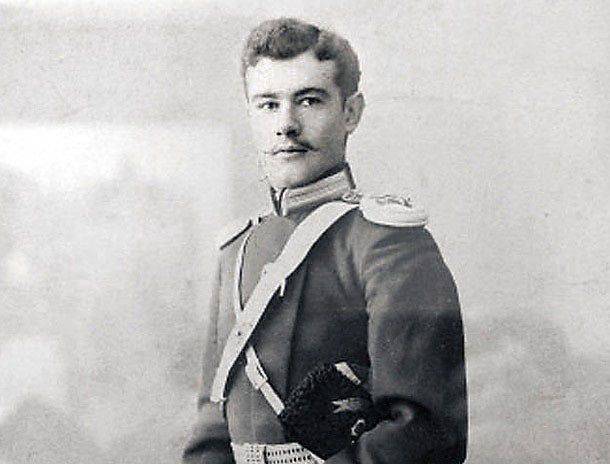
In the same year, 1905, the 27-year-old retired officer wandered into the Biograf cinema, without even thinking about what was going on to meet his fate. The view of the train rushing from the screen directly to the spectators, as well as the comedy “Grinder”, in which the stern look of the cook who decided to sharpen a knife, frightened the grinder so that he decided to flee from her home, changed Khanzhonkov's life. When the 30-minute session came to an end, the career of a new filmmaker Alexander Khanzhonkov was just starting, he just got sick of cinema.
Alexander Khanzhonkov decided to invest all the money given to him after the dismissal, and it was a lot of money, by going to buy a projection device in the Brothers Pate shop, which was located on Tverskaya Street in Moscow. In the same store, he met Emil Osh, who managed to impress Khanzhonkov with the prospects for the film business and suggested organizing a trading house “E. Osh and A. Khanzhonkov ”, intended for the rental of foreign films on Russian screens. Terms of the transaction were equal - both are invested in equal shares by 5 000 rubles.
However, in the end, Osh turned out to be an ordinary adventurer - he simply had no money. But this was discovered already in the process, when the partners traveled in a train that carried them to Europe for the purchase of film material. Due to the lack of necessary funds in the way, all known companies were closed for them. However, without despair, Alexander Khanzhonkov decided to conclude an agreement with the start-up company “Urban”, in which he managed to get the paintings for his share and, moreover, he managed to take them on credit for the same amount. He managed to sell about half of the films without even going back to Russia. The remaining paintings were fairly easy to sell in the Russian capital. But the profit at the same time was about 10%.
Emil Osh, taking all the money, went to the United States to purchase new Western films. At this time, Alexander Khanzhonkov entered into correspondence with many companies from Europe. He was offered both personal meetings and good conditions, but he simply did not have the funds for the trip. Only the English campaign "Gepfort" was able to save the Russian entrepreneur from inevitable bankruptcy by sending her own paintings on the terms of their payment as they were sold in Russia. For example, the sent movie “Nil at Night” was sold in the most incredible edition of those times - approximately 100 copies. Even by modern standards, this is quite a serious figure.
After some time, Osh returned from the United States, but the pictures he brought were rather dull, none of the owners of Russian cinemas tried to acquire them. In addition, he brought 6 new projection devices to Russia, but all of them turned out to be simply unsuitable for use. This is where their partnership with Khanzhonkov ended. Alexander Khanzhonkov did not give up. Borrowing money from friends and taking part of the money on credit, he opened his own trading house, “Khanzhonkov and Co” (who exactly were his associates, story left in secret) in the house Savinskogo monastery. At the same time, this house also attracted other film-lovers - there are also 4 rolling offices here.
Success came to Khanzhonkov later. Until the summer of 1907, his apartment turned into a full-fledged office, in which he organized his own cinema, as well as a full-fledged film maker and a pavilion for filming. In the basement of the house, he arranged the film laboratory, which was intended for the installation and organization of Russian-language captions to foreign films. Such a move gave Hanzhonkov an indisputable advantage over his partners. At the same time, Khanzhonkov began to release his own films.
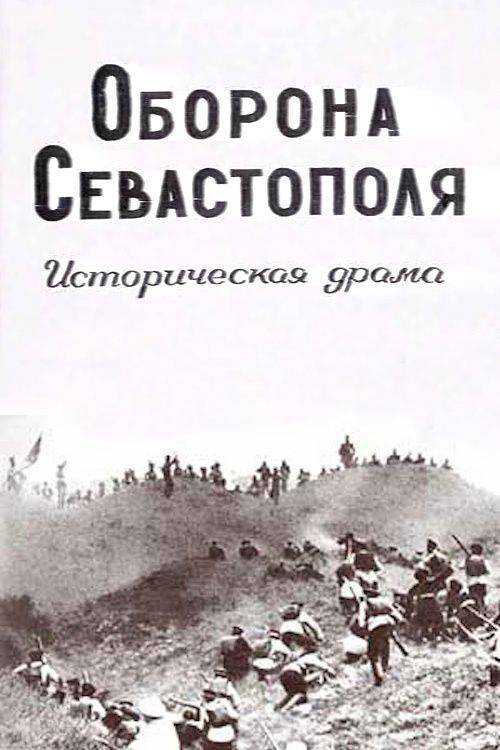
Over time, he decided to open his own film studio, which was eventually built in the summer of 1909. However, the filmmaker decided to go even further by renting a piece of land in Sokolniki, in which the well-known tapes “Yermak - Conqueror of Siberia”, “Rusalka”, “Boyarin Orsha” and others were shot at that time. In 1910, the film lab of Khanzhonkov eventually moved to the station in Krylatskoye, where film works on Russian literary classics were filmed: “Idiot”, “Queen of Spades”. Over time, according to the number of films produced, the film studio Alexander Khanzhonkov was able to catch up with the market leader, the French company Brothers Pate.
As a result, the market leaders became nervous and started building a new film factory, which was equipped with the latest science and technology and was located near the Brest station. And Alexander Khonzhankov, having shot some scenes from the battle picture “Defense of Sevastopol” by that time (in the future this picture thundered all over the world and was able to enter the world history of cinema because of the scale of filming, for which parts of the Russian army and fleet), deciding to keep up with the Pate Brothers, he built an even larger film studio located on 29 Zhitnaya Street. In this new studio, the main pavilion already occupied more than 1700 square meters, there was also an auxiliary pavilion. The studio had its own requisition, dressing room, laboratory, as well as its own scientific department, intended for the production of educational and documentary tapes.
At the same time, Alexander Khanzhonko collaborated with the best directors of his years, among whom were V. Goncharov, A. Uralsky, A. Gromov, E. Baue, P. Chardynin, V. Severin. It was in his company that, for the first time in our country, animated ribbons began to be filmed, by artist-photographer V. Starevich. His unique works, which include the “Beautiful Lucanida”, “Fun scenes from the life of animals”, “Christmas of forest dwellers” gained popularity among viewers of those years.
Especially much can be said about the full-length and unprecedented historical documentary film “Defense of Sevastopol”, which tells about the heroic and tragic events of the Crimean War of 1854-1856. This film was made by Khanzhonkov in 1911. This picture came out in large quantities and was bought up by almost all European rental companies. This film was shot by the personal permission of Emperor Nicholas II. A premiere of the tape took place in the Livadia Palace. The film made such a strong impression on Nicholas II that after the end of the show, he personally presented Alexander Khanzhonkov with a diamond ring from his hand. In the same year, the filmmaker was awarded the Order of St. Stanislav 2 degree - “for extremely useful work in the field of Russian cinematography”.
Since 1914, the situation has changed: with the beginning of the First World War, the borders of the Russian Empire closed. However, under these conditions, the Russian film maker had the prospect of full coverage of the domestic film market, from which Western producers had to leave. Alexander Khanzhonkov at this time released such popular paintings as “Keep quiet, sadness, keep quiet”, “Life for life”, “Song of triumphant love”, “Natasha Rostov” and many others. It was he who opened up for the actors who rattled all over the Russian empire - Vera Kholodnaya, Vitold Polonsky, Ivan Mozzhukhin and many others. Artists of the theater Konstantin Stanislavsky, who was a fan of the activities of Alexander Khanzhonkov, took part in the classic films, which were shot on his film production. It is worth noting that before the revolution, Alexander Khanzhonkov made the most films on the subjects of Russian classical literature. So in his paintings the famous singer Fedor Shalyapin was shot, and the poet Alexander Vertinsky, who visited Alexander Khanzhonkov in his Yalta house shortly before the 1917 revolution of the year, kneeled down, sang his own favorite romance.
At the same time, the competition in the film market also grew, the number of film studios, rental companies and pavilions increased by dozens annually. The tough competition in the market took Khanzhonkov a lot of health and strength, which ultimately confined him to a wheelchair. As a result, doctors recommended Alexander Khanzhonkov to move to a warmer climate. So his family chose Yalta, where he moved to 1917 year. It was in Yalta that he made his films “The Sea”, “The Tale of the Spring Wind”, “The Star of the Sea”, “The Great Asp”, “The Mystery of the Southern Nights” - all they did here were 17 paintings for 3 of the year.
The revolution made major changes in the life of Khanzhonkov. In the 1919 year after the nationalization of cinema, he lost everything that he possessed and that belonged to him by right. In 1920, he and his family fled from the Crimea, emigrating to Austria. In Austria, his wife died rather quickly. At the same time, unlike the rest of Russian film makers, he returned back to his homeland. He was invited back to Soviet Russia in 1922 on the wave of a short thaw from the time of the NEP. First, the Soviet authorities needed the professional skills of the old-fashioned specialists (they did not have time to appear). Secondly, the loyalty of key figures of the pre-revolutionary establishment could have a positive effect on the propaganda of the Soviet Union. As a result, in the 1923 year, Alexander Khanzhonkov returned to his homeland, here he married for the second time, this time installer Vera Popova, and really managed to work, he was the director of one of the Prolyotkino factories, but only 9 months. Anatoly Lunacharsky, the people's commissar for education of the Soviet Union, sent him a telegram on his return to the USSR.
In 1926, the prerevolutionary filmmaker, confined to a wheelchair, was arrested in a fabricated case of embezzlement - the need for specialists had already disappeared. Khanzhonkov was indicatively sentenced to 6 months in prison, and then just as revealingly he was amnestied right in the courtroom, but at the same time deprived him of all civil rights. As a result, Alexander again had to leave the capital in order to settle in Yalta, where he was allocated a passage room. As a result, brought to an extreme need, the deprived Alexander Khanzhonkov personally addressed a letter to the chairman of the Soviet Union’s film and photo cinema department, Boris Shumyatsky. In his address, he asked for help to enter the working family of Soviet cinematography as a full member, explaining that otherwise he and his family would be threatened with just a banal death from malnutrition. Not surprisingly, they responded at the top. In connection with the 15 anniversary of the Soviet cinema, Alexander Khanzhonkov was rehabilitated, he was granted a personal pension in 350 rubles. This small but still steady income allowed him to work on his memoirs, in which the former Russian filmmaker spoke about his life path, while trying not to let go of too much.
During the occupation of the Crimea by German troops in the 1941-1944, Khanzhonkov, who was wheelchair-bound, remained in the occupied territory in Yalta, while he managed to live to win the war. He died a few months after the end of World War II - 26 September 1945, at the age of 68 years. He was buried in the old Livadia cemetery, but later his ashes were reburied in the necropolis on Polikurovsky hill, where a large number of Russian celebrities rest.
The memory of Khanzhonkov was immortalized by monuments. 8 August 2008 was a monument to the pioneer of Russian cinema Zurab Tsereteli opened in Makeyevka. And on August 26, his memory was immortalized in Yalta: a monument to Alexander Khanzhonkov as the founder of the Yalta Film Studio was unveiled in the framework of the XII International TV Film Forum “Together”. His monument was installed in 100 meters from the administrative building of the Yalta Film Studio.
Information from free sources
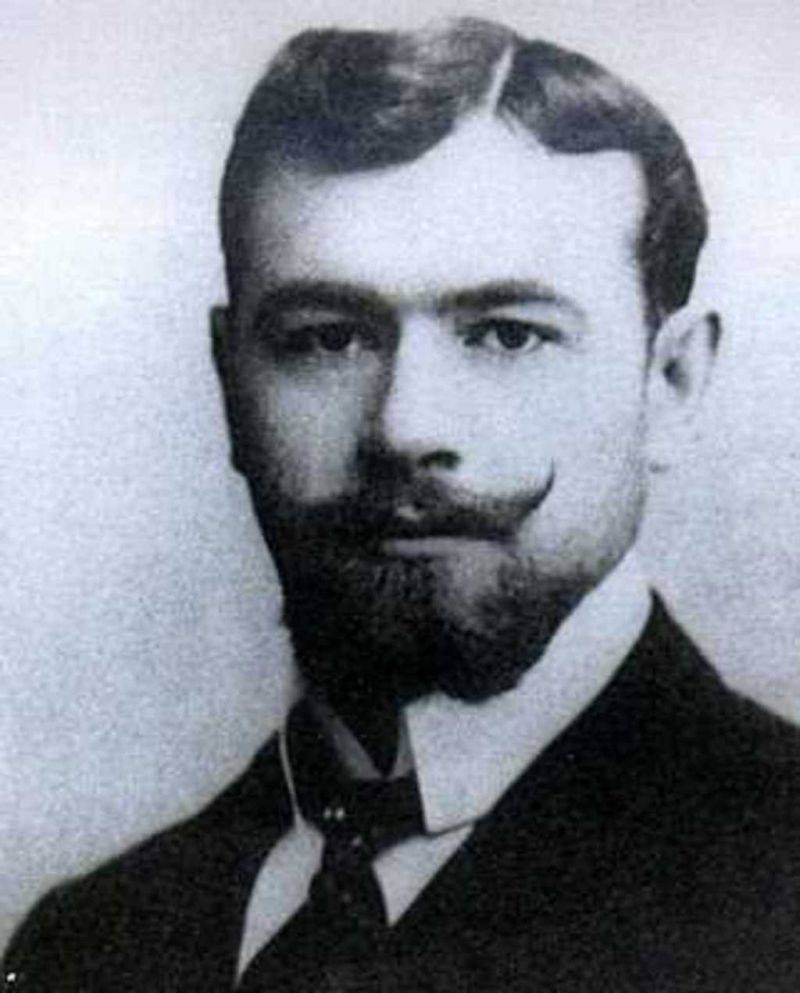
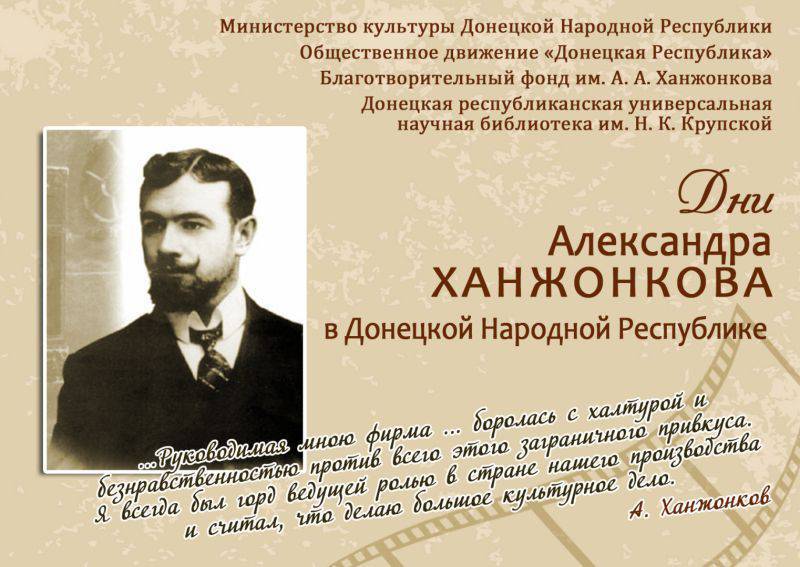
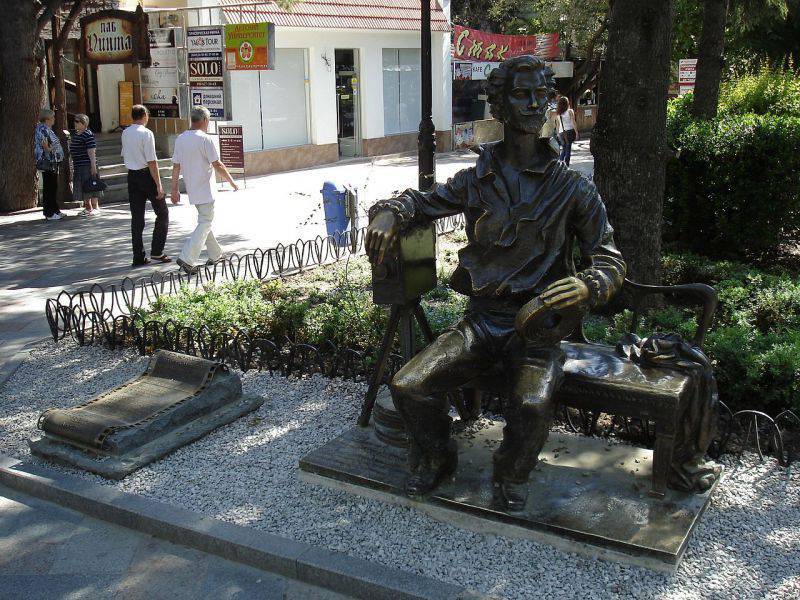
Information